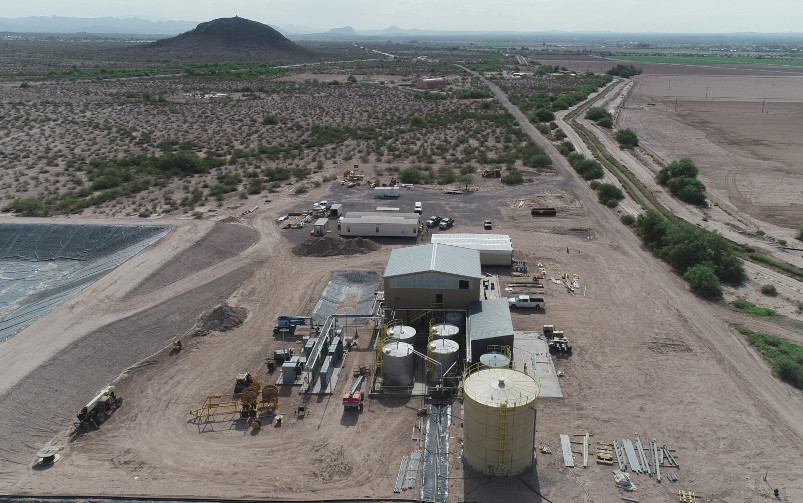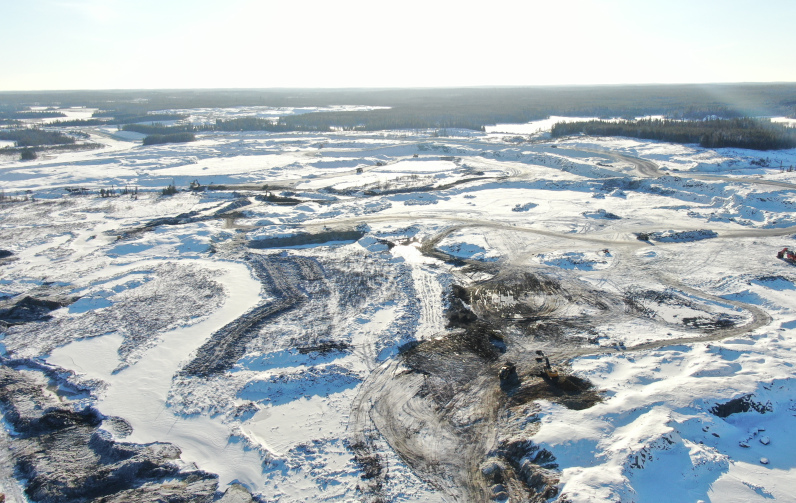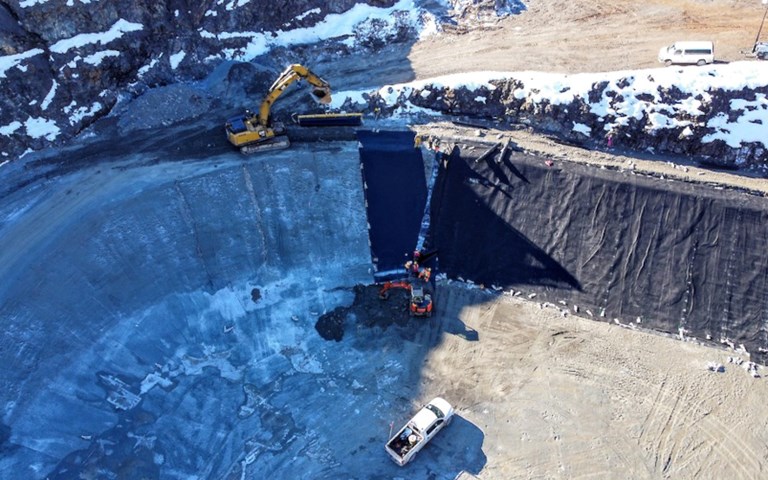New mines (like Ascot Gold's Premier project currently under construction) will now be required to cover 100 per cent of its reclamation liability in its paid security. Courtesy of Ascot Gold
An interim change to British Columbia’s mining reclamation security policy will see mining companies operating in the province become responsible for a higher share of the costs of reclamation.
When companies are applying for mining permits, they are required to submit a plan covering the reclamation of the environment impacted by the development and operation of the mine. Crucially, the companies are also required to place a security with the province based on a total liability cost of the reclamation. So, in the case that a company becomes insolvent and is no longer able to cover the costs of reclamation, the taxpayers will not be responsible for the difference.
The new policy, announced on April 5, is bringing some changes to how the liabilities are calculated, and how much of the upfront reclamation costs miners are responsible for. Under the new policy, any new mines and any mines that have less than five years of mineral reserves remaining will be required to post a full reclamation security equal to its liability. Additionally, when calculating the liabilities, the cost estimates will include both “conventional reclamation," such as re-sloping and re-vegetation, and environmental liabilities, such as water treatment, as well as the costs of operating and maintaining any necessary water-treatment plants.
According to the B.C. government, these changes have been made to “ensure owners of large industrial projects are bonded moving forward so that they, not B.C. taxpayers, pay the full costs of environmental cleanup if their projects are abandoned.”
These changes are the result of a multi-year process, stemming from a 2016 report from the province’s Auditor General on compliance and enforcement of the mining sector. The report noted that the Ministry of Energy and Mines (MEM) was not adequately ensuring that the costs of reclamation were being covered, saying that “MEM’s compliance and enforcement program is limited,” and noting that its financial security deposits for the mining sector were under-secured by $1.2 billion compared to the total costs of liabilities, having only collected $0.9 billion out of a total liability of $2.1 billion, a fact that was not known to the public at the time.
As it stands, mining companies are not always required to pay the full cost of their potential liabilities. Rather, the province uses a risk-based approach to determine how much of its liability a mining company is required to pay, based on the likelihood of the company defaulting. A 2017 report from consulting firm EY found that while MEM was considering the risk factors when determining the amount of security to hold, it had not defined the “acceptable threshold for each factor above which may lead the government to not require full security.” In other words, the standards were not set in stone and differed on a case-by-case basis.
Related: How the deployment of the measure by the Biden administration will impact the mining industry
The province has since done a better job of both collecting securities from mining companies and publicly reporting its figures, though a gap between securities and liabilities still exists. According to the 2020 annual report from the Chief Inspector of Mines, the mining sector owes a total of $3.4 billion in liabilities, with the province holding $2.3 billion in securities, for a difference of $1.1 billion.
These changes under the interim policy have been designed to better mitigate that risk by requiring mines at their most vulnerable points – right as they begin operations and right as they are about to end operations – to have their liabilities 100 per cent covered. According to the policy, “new mines that are highly leveraged may be more susceptible to fluctuations in commodity prices. In the latter stages of a mine’s life when reserves are depleted, the likelihood of another operator acquiring the mine site in the event of a default is limited.”
This policy will not, however, require mines to cover liabilities based on projected life-of-mine costs, and will instead see its liability examined every five years per the previous policy. According to the province, this was done to promote long-term mines without penalizing companies that have “conducted exploration and planning to demonstrate the viability of long-term mining.”
Industry reaction to these changes has been muted, as the policy is still being reviewed and updated, according to the province. Michael Goehring, president and CEO of the Mining Association of British Columbia (MABC), said that on first look, the interim policy included substantial bonding requirements that exceed most jurisdictions in the world. It appears to encourage long-term environmental stewardship and the responsible development of the metals and minerals the world needs to support the low carbon future.
Goehring also mentioned that MABC is reviewing the policy and consulting with its members, but also that B.C.’s mining industry provides more reclamation security than any other natural resource sector.
Should these changes be permanently enshrined into law, those securities stand to be even higher.




